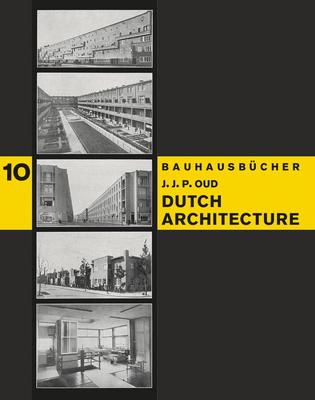The pioneer of Dutch architectural modernism sets out his design vision
In the 1910s, Dutch architect Jacobus Johannes Pieter Oud (1890-1963) developed a new vision of modernist design with highly geometric construction through his government-commissioned housing blocks in Rotterdam. Though more closely associated with the concurrent De Stijl movement, Oud's forward-thinking approach to architecture also proved indispensable to the Bauhaus school of thought. "What has happened teaches lessons for what is to come," writes Oud in this examination of Dutch architecture, in which he summarizes theoretical and practical findings. Oud's main concerns were with the establishment of cost-effective construction methods in concert with an attention to utility and human psychology.
As part of the publisher's ongoing Bauhausbcher series, Lars Mller has released a facsimile edition of Oud's text translated into English with the original design and typography.
